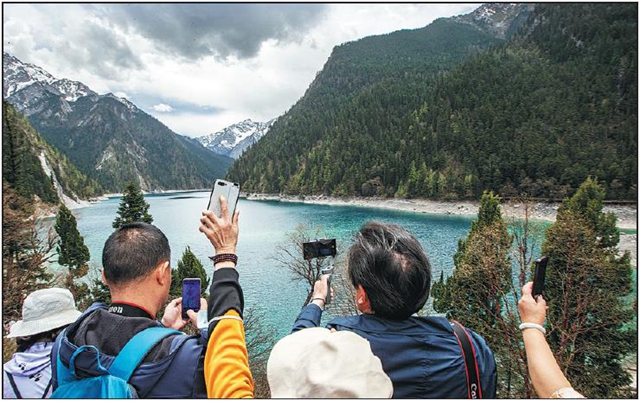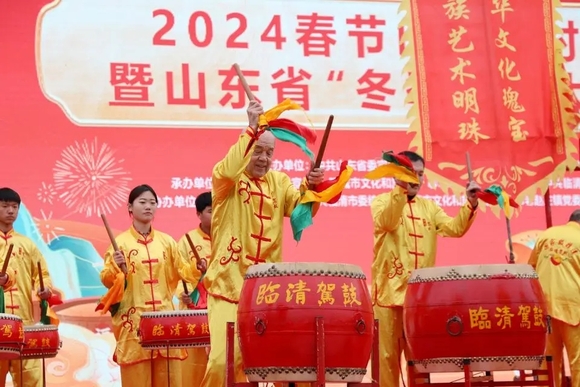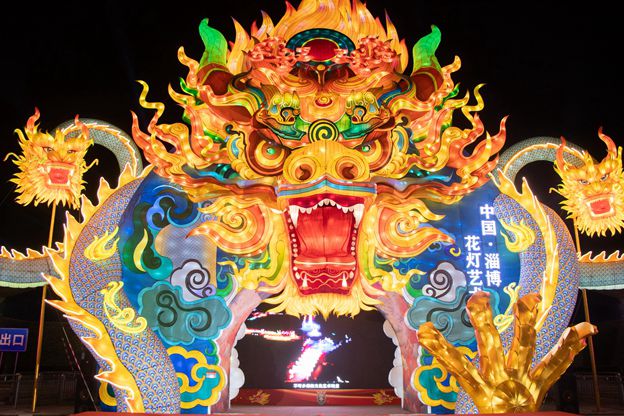Yellow River civilization
By Yang Feiyue| (China Daily)| Updated : 2021-06-16
Print Print
The Jiuzhaigou National Park in Sichuan province provides tourists with a spectacular backdrop. [Photo provided to China Daily]
World heritage sites
・ Sichuan Giant Panda Sanctuaries
In Southwest China's Sichuan province, the sanctuaries are home to more than 30 percent of the world's pandas. It covers 924,500 hectares with seven nature reserves and nine scenic parks in the Qionglai and Jiajin mountains. Visitors can see other endangered animals including the red panda, snow leopard and clouded leopard here. The sanctuaries are among the richest botanical sites with 5,000-6,000 species of flora in over 1,000 genera.
・ Emperor Qinshihuang's Mausoleum Site Museum
Buried deep under a hill in Xi'an, the museum in Northwest China's Shaanxi province offers a look at Terracotta Warriors from more than 2,000 years ago. These sculptures are the afterlife garrison force protecting the mausoleum of China's first emperor who created the first unified nation of China. More than 7,000 terracotta sculptures of soldiers, horses, chariots and weapons have been discovered in the excavations and are displayed at the museum.
・ Site of Xanadu
The site sits in Xilingol League in Inner Mongolia. It is one of the best preserved sites of capital cities of the Yuan Dynasty in China. Covering 25,000 hectares, the site was a unique attempt to assimilate the nomadic Mongolian and Han Chinese cultures. The site was planned according to traditional Chinese feng shui in relation to the nearby mountains and river. There are temples, palaces, tombs and nomadic encampments at the site, reflecting the clashes and blending of grassland cultures.
・ Mount Wutai
Located in Shanxi province, the mountain features five flat peaks. It is considered a holy place of Buddhism and has a great number of temples. Temples have been built on this site from the 1st century AD to the early 20th century. Dating from AD 857, the main hall of Foguang Temple is one of the oldest surviving wooden buildings in the country. The buildings on site showcase the way in which Buddhist architecture developed and influenced palace buildings in China for over a millennium.
Traditional Pingyao, Shanxi province [Photo provided to China Daily]
・ Ancient city of Pingyao
The county-level city in Shanxi province retains ancient walls, streets, shops, dwellings and temples of the Han people from the 14th to 20th century. Its layout reflects the development of Chinese architectural style and urban planning over more than five centuries. Pingyao was a financial center from the 19th century to the early 20th century, and the nearly 4,000 existing exquisite ornamental shops and traditional dwellings in the town have witnessed the city's economic prosperity of over a century.

 2024 Shandong Rural Cultural and Tourism Festival
2024 Shandong Rural Cultural and Tourism Festival  Celebrate Spring Festival in Zibo
Celebrate Spring Festival in Zibo  Share your views on 2024 China's govt work report
Share your views on 2024 China's govt work report